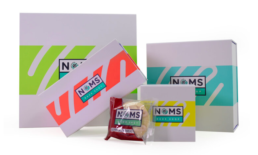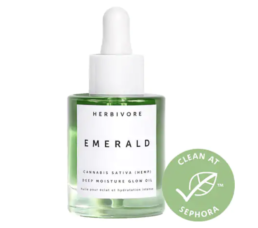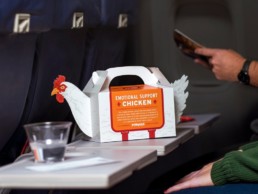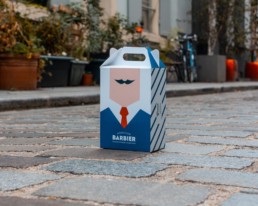How to Promote a New Product to Customers
boxdesign
One of the biggest challenges a brand faces when launching a new product is trying to figure out the best way to generate consumer interest. After all, most of us are loyal to certain brands and products, and it can be difficult to get people to try something new. This is especially true when the product being marketed has a lot of well-known competitors. How can a marketing team ensure that their brand’s product will be able to be seen- and hopefully purchased- by the right audience? Using custom packaging to help your product stand out against competing brands can help you attract your target market.
Of course, not all custom packaging is created equal. Certain factors affect the subconscious mind of the consumer when looking at packaged products, and can make a customer rank products as more or less attractive, based on the physical attributes of the packaging it comes in. A 2013 study (https://onlinelibrary.wiley.com/doi/abs/10.1002/mar.20651) revealed that attractive packaging triggered more intense brain activity, particularly in the areas of the brain associated with impulsivity when compared with neutral packaging. Additionally, both attractive and unattractive product packaging led to less activity in areas of the brain responsible for reflective thought than neutral packaging. This means that a customer tends to go with his or her gut reaction to a product, and the way it is packaged can make all the difference!
Using Custom Packaging to Promote Your Product
A product’s packaging can be far more important than you may think. Customers get their first impression of a product by looking at its packaging and can make snap decisions based on their initial reaction. For this reason, it is critical to ensure that your brand new product’s packaging stands up to the ultimate test of consumer preference. But how can you be sure that your product’s custom packaging generates the level of interest and excitement your brand needs to make people purchase the product? Here are some of the key psychological factors that make a consumer choose one brand’s product over another.
Color
Did you know that most people make subconscious judgments about a product within the first 90 seconds of seeing it? Not only that but the majority of consumers- nearly 85 percent!- base these first impressions on color alone. When it comes to custom packaging your new product, color is perhaps one of the most important factors to consider. Certain colors are believed to be more eye-catching than others, based on research. Using these colors- red, yellow, green, and pink- in your product’s packaging design may help to increase the likelihood of a customer looking at your product first. However, this doesn’t mean that every single product on the market should be packaged in one of these four colors; in fact, doing this would create an opposite effect on consumers, causing them to potentially pass your product up for blending in with all the rest. By ensuring that your product’s custom packaging is in a different color than any of the competitors in your market, you can create what is known as the “isolation effect” and capture your audience’s attention by being different from the rest. Bottom line: if your competitors all use pink in their packaging, use green. Dare to be different, and you may receive more positive attention because of it! It’s also important to consider the emotional connotation certain colors have with people. For example, blue and lavender are considered soothing colors, which is why they may be best suited for calming products, such as spa treatments or moisturizers. Meanwhile, products for the kitchen need to be associated with cleanliness, which is why white or silver are the most popular colors for the packaging of small appliances. By considering your product’s function, you can strike upon the appropriate color for your custom packaging.

Shape
Quick, what’s the shape of a Coca-Cola bottle? How about a can of Pringles potato chips? Sometimes, it’s the shape of product packaging that makes it stand out against the sea of competitors. While it isn’t often that a product’s custom packaging becomes more iconic than the product itself, like in the two above examples, thinking about how shape can affect a consumer’s choice can help you find the right direction for custom packaging your new product. While there is no such thing as one “right” shape for a product package, there are some things to keep in mind about psychology when you are trying to hit on just the right packaging design. For example, people tend to prefer curves to straight lines and, in fact, show a bias toward sharp, angular shapes in product packaging. This can be because of the way they perceive the product packaging will feel in their hands and naturally gravitate toward packages that are smoother and easier to hold. All of these consumer preferences are something you’ll want to strongly consider f you decide to literally think outside the box when it comes to custom packaging your product.
Texture
Product packaging that includes a distinctive texture can be beneficial in two distinct ways: not only can it help make your product easily identifiable even by touch, but it can also create a pleasing tactile experience for your customer that gives them a positive association with your brand and the product itself. Choosing a fun texture will encourage consumers to hold your product’s package for longer than they may have with an untextured package. This, of course, can lead to them purchasing the product, even if they didn’t intend to buy anything at all! Smooth matte and high-gloss surfaces can be used to make custom packaging pleasing to the touch, as can soft, fluffy textures. Using texture in your product packaging can also help convey a certain air of elegance or prestige about your brand, causing customers to look upon it as a luxury item. Some brands that market high-end products rely on texture to connote an upscale, sophisticated feeling and make customers feel elegant for choosing them. Depending on the nature of your brand and product, you can make an appropriate choice for a custom packaging texture that makes customers want to hold it forever!
It’s easy to overlook the print on a product’s custom packaging, especially when you are already thinking about its color, shape, and texture! However, typography can make a huge difference in the success of a product. Since customers who are unfamiliar with your new product will be inspecting the package for information about it, they will be sure to make a stronger connection with packaging that contains a font that resonates with them. It goes without saying that easy-to-read text will help your customers better understand the attributes of your product in a shorter time, but there is something to be said for an ornate script if that font better exemplifies the nature of your brand. Once again, choosing the typography that will accompany your other custom packaging choices is more about understanding the mission and story of your brand: try to choose a font that is short-hand for your brand identity and how you want to be perceived by your audience. For example, products that are more whimsical in nature, such as children’s toys, are best served by a playful, handwritten-looking font, whereas a luxury brand might opt for a serif print font to add a certain old-school weight to the packaging.
By understanding how you want your product to be perceived by the public, as well as knowing your target audience, you will be able to hit upon a winning packaging design that can get you noticed by the right people. Be sure to refer to these four key factors and see how your custom packaging design stacks up!
Looking for a solution? We can help.
Headquarters
9211 Corporate Blvd Ste 110
Rockville MD 20850
Satellite Offices
Dallas, TX
Paris, France
San Francisco, CA
Scottsdale, AZ
info@vivaboxsolutions.com
Phone
800-529-1988
Minimum Order Quantities:
RPET Totes: 3,000
Kraft Shoppers: 5,000
Rigid Boxes: 3,000
Folding Cartons: 5,000
How Packaging and Branding are Bringing CBD Mainstream
boxdesign
Research that addresses the benefits of cannabinoids (CBD) on the human body is becoming more recognized and accepted, and the awareness of wellness, skin care, and CBD is part of that growing recognition. PSA: cannabinoids and get-you-high marijuana are not the same things. CBD does not contain the ingredient that gets you high (THC).
There is still a ways to go, as the FDA continues to move slowly in its endorsements for cannabinoids and it is not yet legal in several states, but there are many companies, startup and established alike, currently embracing–within legal parameters–CBD in beauty and beverage products, especially as state and federal laws become more inclusive of CBD products.
As the public becomes more aware and accepting of the benefits of CBD in beauty products (and beyond), branding and packaging will be a key step to consumer trust and confidence, especially in these transitional stages.
More than that, though, new entrepreneurs and brands are doing away with marijuana-leaf logos and demystifying the dosing and buying of CBD by providing education and premium packaging designed to increase both understanding and acceptance of these products and this ingredient.
First, a Quick Science Lesson
In a recent CBD for Life article, they explain that scientific researchers have shown undisputable CBD connections beneficial to the human body. “It is because of how CBD communicates with the endocannabinoid system,” the article said. The human body has a system of endocannabinoid neurotransmitters, or receptors, and “These receptors are spread throughout the body, but are observed mostly in the skin.”
What has been scientifically proven is that the human body has a natural endocannabinoid system, which means there is a chain of receptors that connect every part of the human body, from the tissues–to the nerves–to the mind. Phytocannabinoids are produced in nature (the marijuana plant system, for example) and can be consumed by the human body to create a relationship of benefits. Although cannabinoid products can be found in other types of plants, like echinacea, liverwort, pepper, and even chocolate, CBD in phytocannabinoids just so happens to have the most potent and beneficial effects for the human body.
CBD and the Beauty Industry
According to a January 2019 report by Beauty Packaging, “Cannabis is known for stress-reducing and pain-relieving benefits. Use of CBD products [for skin] can reduce redness, irritation and even acne.”
Neiman Marcus recently introduced their CBD beauty line and Kim D’Angelo, beauty buyer at Neiman Marcus, recently explained that
“Cannabis beauty brands are becoming increasingly popular and CBD products are the next big thing in beauty.” Such products are comparably priced to other luxury brands like Sephora, L’Oréal, and Estée Lauder.

https://www.neimanmarcus.com/p/ildi-pekar-sleeping-mask-infused-with-cbd-oil-1-1-oz-30-ml-prod219110020
Neiman Marcus I-Pekar CBD Oil Skin Care
Another well-established company, Barneys New York (as well as their locations in Chicago, Beverly Hills, and Las Vegas), has also released a new CBD skin care line “Lab to Beauty.” They promote their products by touting “the pure potency of plants, combined with the healing effects of CBD.”

https://www.barneys.com/product/lab-to-beauty-the-cbd-drops-506111933.html
Barneys New York “Lab to Beauty”
More so, independent startups like CBD for Life and Fleur Marché are offering quality products and walking consumers through the process if they are unsure of their state’s legal boundaries. Furthermore, their packaging starts to play more on the natural, sustainable elements of cannabinoids rather than the more stereotypically rebellious aspects.
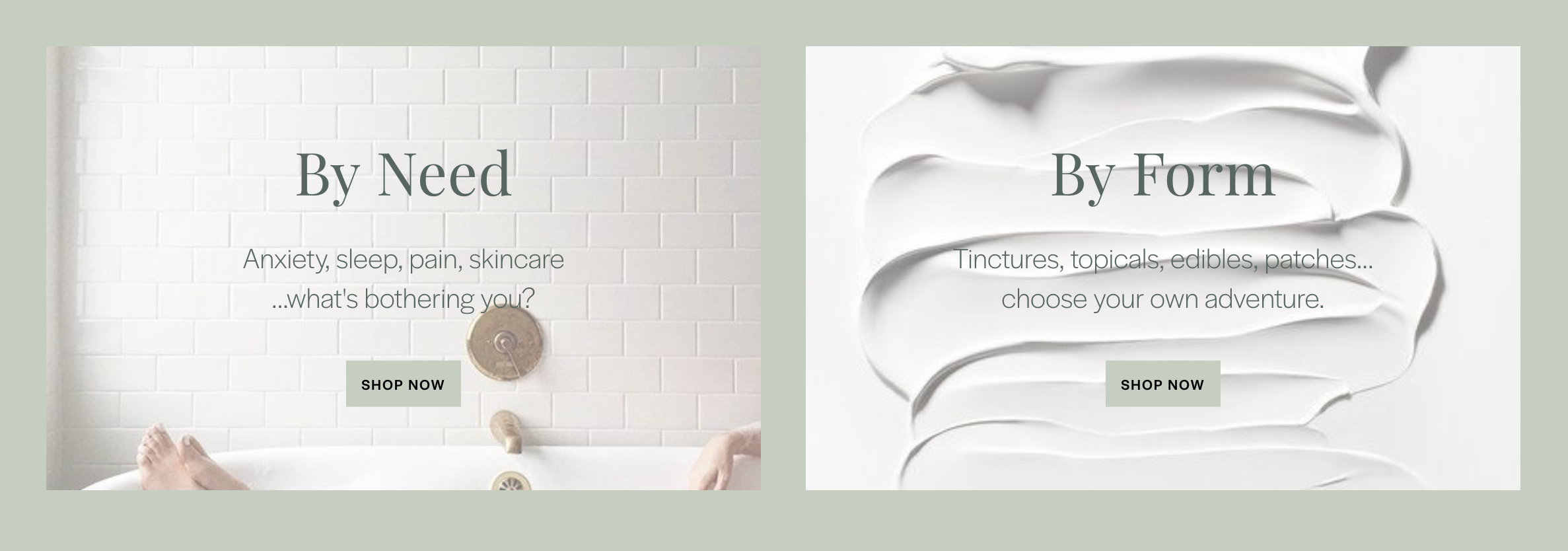
https://fleurmarche.com/
Fleur Marché
Of course, because of current restrictions, they are only sold in locations where states have already legalized medicinal and/or recreational use as well. Although this is an initial hindrance for the mass consumer, the trend shows CBD and other cannabinoid products are becoming more accepted and could soon be in a store near you, or at least online ordering without repercussions. It is the subtle and medicinal message that continuously needs more strategic attention.
Why Packaging and Branding Matters
Now that we have addressed scientific and legal issues (phew!), let’s get down to how packaging becomes the perfect bridge between consumer skepticism and confidence, as well as overcoming cannabis industry stigma.
Most consumers are still unaware of the differences between hemp, THC, and CBD–and the image of legalization is a narrow one, which depicts a “4:20” recreational lifestyle or, say, images of Shaggy from Scooby Doo: “Zoinks!” This is an unfair representation, and many consumers are starting to understand this. But the packaging and branding industries can easily help alleviate this. Here are a few examples:
First, Vivabox has been addressing the importance of sustainability with our clients, and in an industry like cannabinoids, it is a primary concern. As organic products take a lead in more sustainable packaging (or at least they should), the CBD industry tries to adapt similar branding and packaging objectives: from the Earth, for the body. These connections are beautifully symbiotic.
For those consumers who are already on board with CBD (or any other cannabinoid product), it is an added perk: brown glass bottles, eco-alternatives to bubble wrap–like green wrap or corrugated bubble wrap–and packaging made of 100% recycled boxes, soy ink, and recycled filler/packaging paper. And for those who require more subtle branding and packaging, leave off the marijuana leaf in the design, or at least downplay it.
Consumers are savvy and they don’t want to be reminded of the stigmatic images (even if they rationally know much of it is incorrect). If consumers are dropping premium prices for premium CBD products, they also (if only subconsciously) require smart and subtle branding and packaging. It is a tightrope walk these days, but packaging can also create change in perspective and offer consumer confidence.
Here are a few examples of how Sephora (current client) is creating a balanced brand and packaging campaign:
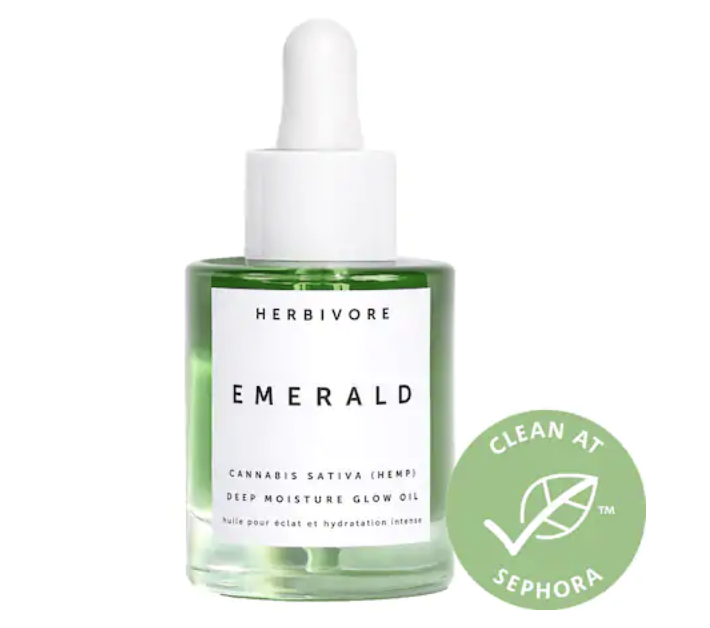
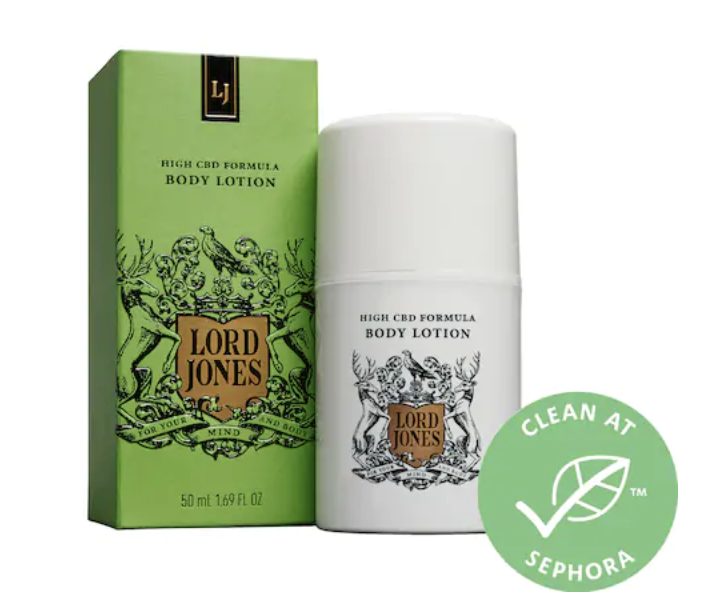



https://www.sephora.com/search?keyword=cbd
Sephora: Herbivore Organic, Lord Jones, Kiehl’s, Josie Maran, and Milk Makeup CBD products
For instance, although there are marijuana references, “Kush” and “Dope,” for Milk and Josie Maran primary packaging, it is not at the expense of good branding and messaging. More so, the Kiehl’s and Herbivore pale green glass (an organic go-to) and high-end typography and packaging suggest they are in on the fun of being able to publicly talk about “weed” while not forsaking their commitment to high quality products.
The rhetorical strategy here does not shy away from its contents but rather marks it acceptable by way of common packaging found in similar non-CBD beauty products. As for the following packing for Vertly, apothecary and luxury elements are used to validate CBD’s confirmed medical and beauty benefits.
The conversation is inherently, “Why would Sephora, Barney’s, Neiman Marcus support this if it wasn’t true?” And the perk? Consumers can buy these and not come off as a “pothead,” and let’s face it: that is what many mainstream consumers fear. This transition from stigma to benefit is all in the packaging. Period.

http://nymag.com/strategist/article/best-cbd-skincare-products.html
Yes, informing the general public of the differences between TCH, CBD, and Hemp are important. They have very different purposes, but CBD has the opportunity to brand itself as something outside of the “4:20” culture. The CBD PR movement all starts with education, but really, it is best promoted with packaging and branding first. These high-end companies have figured it out: the medicinal benefits have become better received in many states, and are recognized as having premium perks for those who can afford it. Packaging that reinforces positive branding while eliminating harmful cliches is possibly the most important first step.
Smart branding and packaging (which is one and the same these days) is the best move forward for beneficial products which were once stigmatized, but no longer are. At Vivabox, we’d like to see a multi-branded CBD ‘starter’ kit with great branding, education, trial, and social media hooks. It’s exciting to see packaging as much more than a box. To us, it’s where the story starts.
Looking for a solution? We can help.
Headquarters
9211 Corporate Blvd Ste 110
Rockville MD 20850
Satellite Offices
Dallas, TX
Paris, France
San Francisco, CA
Scottsdale, AZ
info@vivaboxsolutions.com
Phone
800-529-1988
Minimum Order Quantities:
RPET Totes: 3,000
Kraft Shoppers: 5,000
Rigid Boxes: 3,000
Folding Cartons: 5,000
Know Your Customer: Developing Personas for Packaging Strategy
boxdesign
The key to a successful marketing or branding campaign starts with understanding your target audience, and, a well-defined audience begins with developing buyer personas. In the age of IG and e-commerce, your primary and secondary packaging design should most definitely be part of your CX process and strategy.
A buyer persona is defined as a well-developed character created from customer trends and demands. Most companies attract more than one group of people, so they find it beneficial to develop three-dimensional personalities with names, ages, occupations, certain social statuses, education levels, aesthetic principles, family size, buying trends, and more. Brands interact with people, not cardboard cutouts, so developing these personas are helpful to create a range of insights.
Simply put, developing personas is important, and it is incredible what insights surface when companies take the time to get to know them.
Personas and Packaging
When thinking about brand development and the multiple personas you must nurture, packaging becomes a primary touchpoint. Outside of the actual product, the package is the most tangible branding tool a business has, and these personalities can have a significant impact on your design strategy.
For example, if you’re targeting an older persona, you may want to work with more traditional packaging or play with nostalgic designs that tug at their heartstrings or work with packaging that can be repurposed. You also want to assess your font size and contrast and including smart and obvious ways to open the package for hands that have lost some dexterity.
If you’re going to attract a millennial persona, you may want to develop a more sustainable solution that works with contemporary or forward-looking design and trends. And be sure it has an element of IG-bait.
Packaging the same product in different ways can be a great way to embrace all of your personas without exclusion.
The Power of Personas
Once your business has developed well-rounded personas, what can you do with them? You can do anything! Hopefully, you use them to make every brand decision. Considering that it is the consumer that creates demand, it is essential that all marketing and branding strategies keep all personas in the forefront of every decision.
Consulting personas for insights into what your audience will identify with and what will capture their interest is essential to determining the shape, font, color, textures, and materials you use in your packaging design.
As you develop your packaging for your personas, don’t forget to measure your successes and room for improvement. Analyzing past data and current customer responses is a great way to test if your packaging ideas are meeting consumer standards and how they may be changing. Don’t let your personas get stagnant. They should be an ever-changing point of reference to keep your brand, and packaging, moving forward.
Looking for a solution? We can help.
Headquarters
9211 Corporate Blvd Ste 110
Rockville MD 20850
Satellite Offices
Dallas, TX
Paris, France
San Francisco, CA
Scottsdale, AZ
info@vivaboxsolutions.com
Phone
800-529-1988
Minimum Order Quantities:
RPET Totes: 3,000
Kraft Shoppers: 5,000
Rigid Boxes: 3,000
Folding Cartons: 5,000
In our Digital World, Your Packaging May be the Only Physical Connection You Have with Your Consumers. Three Ways to Make Sure it Counts.
boxdesign
The process of opening a new product can be a gift-like experience which embeds itself into the consumer’s psyche and can even be as great as the product itself.
Packaging is a visceral experience, and as our culture becomes continuously more visual, it feeds more than our desire for something to simply be a container. Our packaging has to mean as much as the product inside of it. Whether it has an aesthetic or ecological meaning, we want our packaging to be a reflection of us. There is a reason why brands rely on them so much. Without the right packaging, people will walk right by you, or even worse, not like you.
So here are three things to think about as you move forward with packaging ideas for the holidays and beyond:
1. The Outer Gift
In the best case scenario, we want our customers to be loyal, and packaging can build and maintain loyalty in a very tangible way. For example, think about a Tiffany box—many of us have never seen one in person, but if someone set one in front of us, it would take a lot to hold us back. There is an entire ethos surrounding that simple robin’s-egg-blue-and-white packaging, and it makes what is inside that much more coveted.
These experiences should be at the foreground of every brand’s identity, and packaging tugs at the very foundation of our consumer experience, whether we are aware of it or not.
According to Danielle Sauvé, Director of Customer Insights and Experience at Danaher Product Identification Platform, “Product packaging is often the only physical marketing channel that the consumer physically touches.”
So, customer loyalty is just as grounded in the tactile experience as it is in the visual and digital experience. Every detail is essential to address.
2. Seasonal Packaging
Adjusting packaging during holidays or other seasonal events is also a way to increase brand loyalty. If the packaging changes enough to be seasonal, customers appreciate the effort. However, be careful…adjusting for holidays or other events should only be taken so far. Customers still want to be able to identify the brand easily rather than hunting for it on a shelf.
Tasteful seasonal packaging is difficult to come by, so also think about how measured you want to be when implementing your packaging strategy. For example, as impressive as Christmas may be for many, the red and green combination can be a bit harsh or garish to others. Many who want to be more tastefully understated may go with more natural color combinations or interesting plaids.
3. The Inner Gift
Another layer of packaging that is just as important is the layout. How does it look once it is opened? As convenient as some packaging is, if each piece is bubble wrapped and jumbled in a box, the customer experience declines rapidly. One does not want to go from the elation of opening a beautiful box to cursing under their breath to unwrap multiple items in taped plastic. If the experience turns sour, you can bet that customer loyalty may as well.
Another common complaint is buying a product with the notion that the packaging is sustainable, only to get inside to find unrecyclable plastic materials. No one wants guilt wrapped with a bow.
So what does all of this mean for the brand? The consumer experience should be a pleasant one from the moment one starts looking for a product, through the unwrapping and big reveal, to the moment when they wonder whether they will keep the box or recycle it. It may be easier said than done for many businesses, but it is a necessity to think about every step of the buyer journey if you want to build and maintain consumer loyalty.
Looking for a solution? We can help.
Headquarters
9211 Corporate Blvd Ste 110
Rockville MD 20850
Satellite Offices
Dallas, TX
Paris, France
San Francisco, CA
Scottsdale, AZ
info@vivaboxsolutions.com
Phone
800-529-1988
Minimum Order Quantities:
RPET Totes: 3,000
Kraft Shoppers: 5,000
Rigid Boxes: 3,000
Folding Cartons: 5,000



